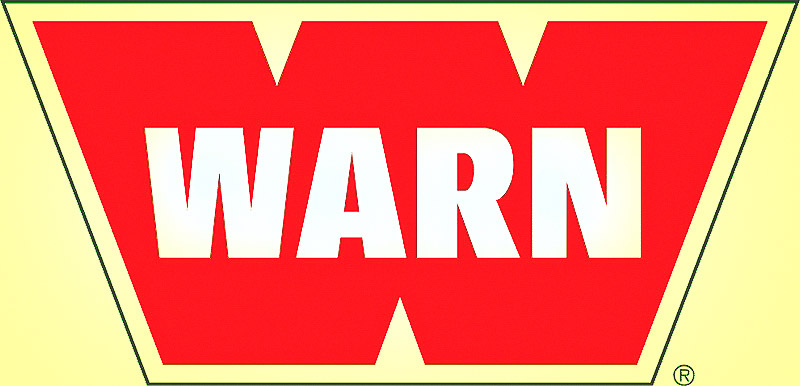Tom Willis lives at northern Nevada. Tom has been involved in all aspects of Off Highway Vehicle (OHV) activities for the past 40 years. He has written and published three guidebooks, covering off-pavement travel and activities in the Nevada and California deserts. Over the last eight years alone, Tom Willis has traveled more than 10,000 miles off pavement. Much of that travel has been research for his popular books.
Tom notes that people have been exploring the Far West for almost 250 years, and virtually any place worth visiting has an established trail access! Dedicated to the principles of Tread Lightly, Tom Willis encourages folks to take plenty of pictures and leave only tire tracks on existing trails. When a destination does involve a short walk, Tom suggests that exercise will probably do us all some good!
Tom Willis’ contributions to this corner of the magazine are about places to see, trails to drive and developments that affect OHV recreation in the western United States. His trail-based articles are destination oriented or “loop” trips, and Tom often talks about things you should know to make your explorations more enjoyable!
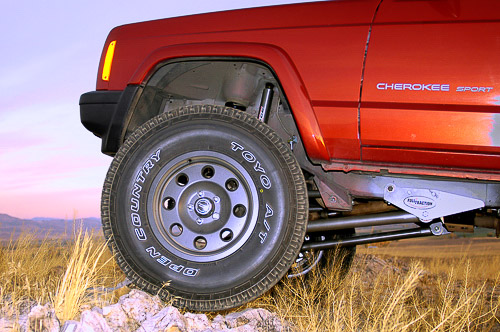
The magazine’s Cherokee stays on the trail at all times. To avoid starting a range fire, do not drive or park in grasses. Stick to designated routes and roads, and follow the Tread Lightly guidelines!
Tom Willis—July 29, 2012: To kick things off, I want to talk about two things that will affect those of us living or exploring at Nevada: the first is fire restrictions, and the second is OHV registration…
Great Basin Fire Restrictions
Every year, as the desert dries out, these lands become a tinderbox, just waiting for the right combination of events. Range fires can be naturally caused, but all too often humans are the catalyst for wildfires.
One element that raises the danger is Cheatgrass, an invasive species found just about everywhere in the country. When dry, this little weed is explosive. Cheatgrass can grow to two feet high and is easily ignited by a hot engine’s exhaust system.
See details on Cheatgrass at:
http://www.invasive.org/browse/subinfo.cfm?sub=5214
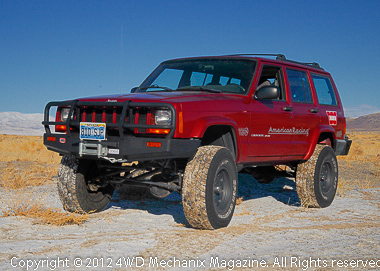
The XJ Cherokee at northern Nevada’s high desert this past winter. Snow contributes to grasses in spring and summer.
Fire restrictions are usually put in place by mid-July or earlier each year and extend until fall rains and snow dampen the grass and sagebrush. After this year’s devastating fires in Utah and Colorado, the land management agencies enacted strict fire restrictions for 2012, with stepped up enforcement.
Note: Go to http://gacc.nifc.gov/wgbc/ for more information on restrictions. This link can be used to determine when restrictions have been lifted.
With the fire restrictions in place you must, when traveling off pavement, carry a shovel, an axe and at least one gallon of water. You must also stay on gravel or packed dirt roads. I personally avoid trails that have vegetation growing between their tracks.
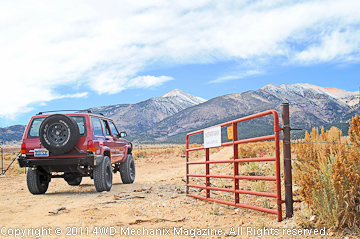
Nevada backcountry can be remote—and brush-cover is common at the high desert. Stay on designated routes to help prevent range fires. Watch for lightning strikes. Report fires immediately if you have cellular phone access!
OHV Registration

This is the Nevada OHV permit on Tom Willis’ Arctic Cat ATV. These tags allow access to the dirt roads and designated backcountry trails of the Silver State!
We drive our registered four-wheel-drive vehicles and street legal dual-sport motorcycles on the highways and into the outback. Many of us also own strictly dirt motorcycles, an ATV or a UTV.
In the past, Nevada did not register dirt motorcycles, ATVs or UTVs for off-highway use within the state. If owners wanted to use these OHVs in other states, we had to purchase non-resident permits. Nevada has been the only state in the West not to require OHV registration.

As of July 1, 2012, the magazine’s cycle is now a candidate for a resident Nevada OHV permit. Previously, Nevada had no permit requirements. Off-pavement motorcycles and ATVs were neither titled nor registered at Nevada.
As of July 1, 2012, this has changed. If you have an OHV, you have a one year grace period (until July 1, 2013) to get the OHV registered for off-highway use. The fee should be $20.00. Registration can be obtained through an authorized OHV dealer or through the mail.
Although the permit and registration program is administered by the Nevada Department of Motor Vehicles, you cannot go to DMV offices to complete the process. If your vehicle is licensed for operation on the street, you do not need the OHV registration.
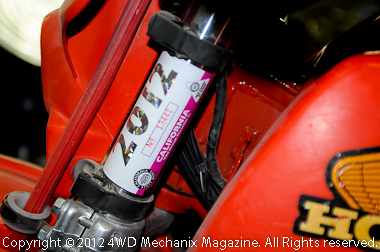
To ride the XR350R while covering the 2012 King of the Hammers Race at Johnson Valley, the magazine purchased a $20 (U.S.) “California Non-Resident OHV Permit”. In the future, this cycle’s Nevada OHV resident permit will be recognized in adjacent states like California.
For more information on the registration process and necessary forms, go to http://www.nvohv.com, the Nevada OHV Commission’s website. After you have your Nevada OHV registration, reciprocity between states applies. You do not need to buy a non-resident permit to ride in the other OHV permit states.
Want to discuss your technical and outdoor interests with like-minded enthusiasts? Check out the 4WD Mechanix ‘Tech and Travel’ Forums! Click here for a guest visit to the forums!

